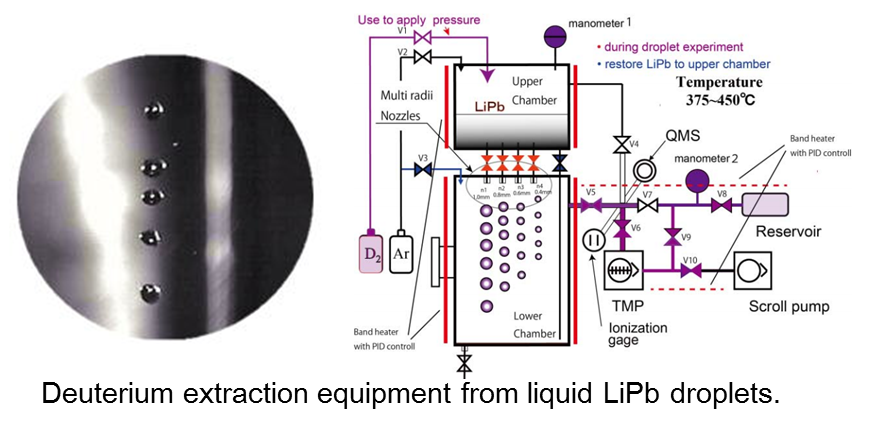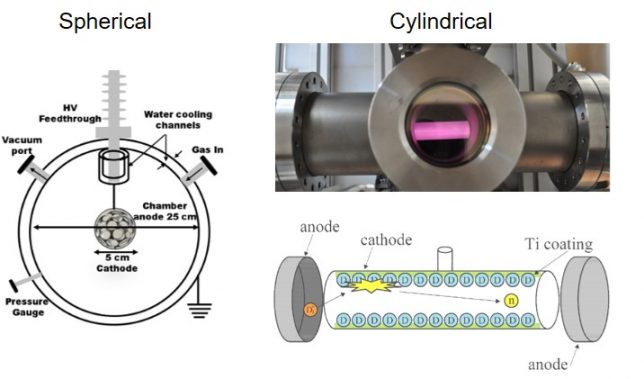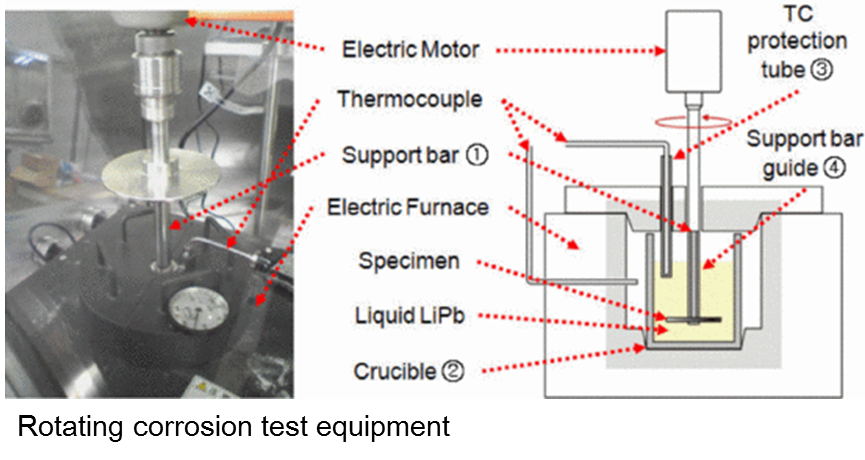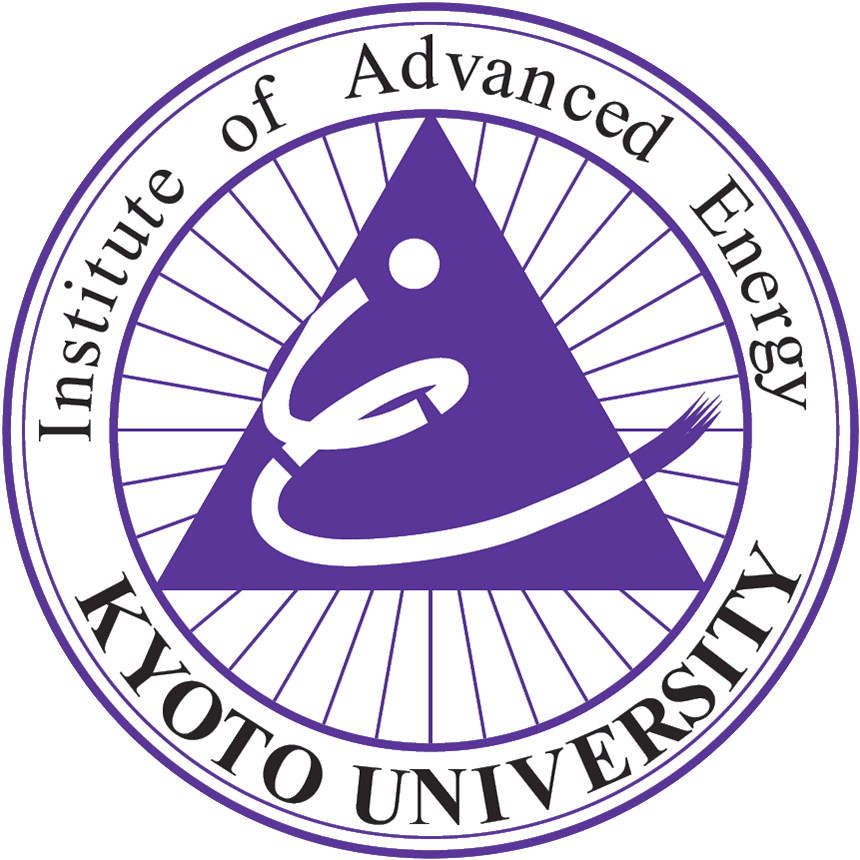Fusion energy is a sustainable power source with zero carbon emissions and minimal waste. And, fuel of fusion reactor is broadly available and almost inexhaustible. For an early realization of fusion power on the planet, we extensively study on hydrogen production/recovery technology, fusion reactor design, economic analysis, material development, and impact on environment.
Tritium recovery from liquid metal

Efficient tritium recovery from liquid metal is an important issue for tritium fuel system in a fusion reactor. The figure represents schematic image of Vacuum Sieve Tray (VST) set up for tritium recovery from liquid LiPb droplet. Neutron generation/measurement experiment is performed by using cylindrical discharge fusion neutron source.
Keywords: tritium recovery from liquid LiPb, permeation of hydrogen isotope, neutron generation by fusion neutron source, neutron measurement.
Related papers
- F, Okino et al. Current status of the continuous tritium recovery test campaign using PbLi droplets in vacuum, Fusion Engineering and Design Volume 146 (2019) 898-901. DOI: https://doi.org/10.1016/j.fusengdes.2019.01.108
- H. Miyagaki et al. Fundamental Analysis for Electrochemical Extraction and Monitoring of Impurities from Lead Lithium and Lithium with Chloride Molten Salt. Fusion Science and Technology 76 (2020) 458-463. DOI: 10.1080/15361055.2020.1716457
- F. Okino et al. Feasibility analysis of vacuum sieve tray for tritium extraction in the HCLL test blanket system. Fusion Engineering and Design 109-111 (2016) 1748-1753. DOI: https://doi.org/10.1016/j.fusengdes.2015.10.004
Neutron generation and measurement
 Keywords: neutron production, DD fusion neutron, neutron detection, neutron imaging plate.
Keywords: neutron production, DD fusion neutron, neutron detection, neutron imaging plate.
Related papers
- S. Kenjo et al. Employing of ZrCo as a fuel source in a discharge-type fusion neutron source operated in self-sufficient mode
International Journal of Hydrogen Energy (2021) In press DOI: https://doi.org/10.1016/j.ijhydene.2021.10.250 - M. Bakr et al. Characterization of an ultra-compact neutron source based on an IEC fusion device and its prospective applications in radiography. Fusion Engineering and Design 167 (2021) 112346. DOI: doi.org/10.1016/j.fusengdes.2021.112346
- K. Mukai et al. Evaluation of tritium production rate in a blanket mock-up using a compact fusion neutron source. Nuclear Fusion 61 (2021) 046034. DOI: https://doi.org/10.1088/1741-4326/abe4e7
- M. Bakr et al. Evaluation of 3D printed buckyball-shaped cathodes of titanium and stainless-steel for IEC fusion system. Physics of Plasmas 28 (202) 012706. DOI: doi.org/10.1063/5.0033342
Fusion materials

Keywords: structural steel, ceramic breeder, divertor, material interaction between structural steel and liquid metal.
Related papers
- R. Omura et al. Analysis of nitrogen distribution in iron-titanium alloys after nitrogen trapping in liquid lithium by using soft X-ray emission spectroscopy, Fusion Engineering and Design 170 (2021) 112548. DOI: 10.1016/j.fusengdes.2021.112548
- K. Mukai et al. Lithium Vapor Chemistry of Hyper-Stoichiometric Lithium Metatitanate Li2.12(2)TiO3+y, The Journal of Physical Chemistry C 124 (2020) 10870–10877. DOI: 10.1021/acs.jpcc.0c02454
- T. Okada et al. Fundamental analysis for electrochemical removal and monitoring of oxide impurities in lead lithium using LiCl-KCl melt. Fusion Engineering and Design 156 (2020) 111597. DOI: 10.1016/j.fusengdes.2020.111597
